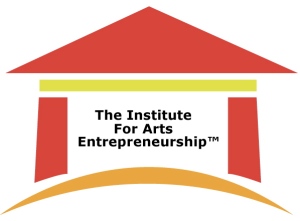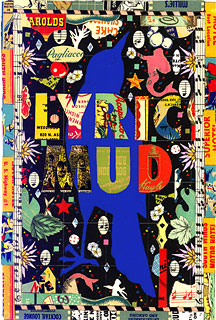This article appeared in The New York Times on Friday, June 12th. It is an extraordinary article about the growth of the number of artists in the United States and the earning and economic potential of both artist and the arts.
On a weekend that has lead to continuous rain fall and record flooding on the Fox River in Illinois, where my husband and I watch the water rise in our backyard for the third time in less than a year, and the sudden news of the loss of a great ethical journalist, Tim Russert, who’s program Meet the Press I have watched since he became the moderator in 1991, this article is a bright ray of sunshine in, what has been for me, a tough week.
************************************************************************************
By SAM ROBERTS, New York Times
If all the professional dancers in the United States stood shoulder to shoulder to form a single chorus line, it would stretch from 42nd Street for nearly the entire length of Manhattan. If every artist in America’s work force banded together, their ranks would be double the size of the United States Army. More Americans identify their primary occupation as artist than as lawyer, doctor, police officer or farm worker.
“It’s easy to talk about artists in lofty and spiritual terms,” said Dana Gioia, chairman of the National Endowment for the Arts. “Without denying the higher purposes of the artistic vocation, it’s also important to remember that artists play an important role in America’s cultural vitality and economic prosperity. Artists have immense financial and social impact as well as cultural impact.”
Drawing from the census, the endowment has compiled what it bills as the first nationwide profile of professional artists in the 21st century.
In 2005 nearly two million Americans said their primary employment was in jobs that the census defines as artists’ occupations — including architects, interior designers and window dressers. Their combined income was about $70 billion, a median of $34,800 each. Another 300,000 said artist was their second job.
The percentage of female, black, Hispanic and Asian artists is bigger among younger ones. Among artists under 35, writers are the only group in which 80 percent or more are non-Hispanic white. Overall, women outnumber men only among dancers, designers and writers. Similarly, while 60 percent of professional photographers are men, 60 percent under age 35 are women.
Like the population in general, the number of artists has grown fastest in the West and the South since 1990, but New York State, followed by California, Massachusetts, Vermont and Colorado, has the most artists per capita.
California claims the most actors per capita, Nevada the most dancers and entertainers, Vermont the most writers, Tennessee the most musicians, New Mexico the most fine artists, Massachusetts the most architects and designers (including, among others, commercial, fashion, floral, graphic, interior designers and window dressers), Hawaii the most photographers and North Dakota (where radio shows abound) the most announcers. By 2005 the proportion of non-Hispanic whites among artists had declined to 80 percent from 86 percent in 1990, but the proportion of blacks, 5 percent, remained the same.
San Francisco leads metropolitan areas in the proportion of artists in the work force, followed by Santa Fe (which ranks first in writers and fine artists), Los Angeles, New York and Stamford-Norwalk in suburban Connecticut. The Top 10 also include Boulder, Colo.; Danbury, Conn.; and Seattle.
Orlando, Fla., leads in entertainers and performers.
The “Artists in the Workforce” report, prepared by Sunil Iyengar, the endowment’s director of research and analysis, identified 185,000 writers, 170,000 musicians and singers, nearly 150,000 photographers, nearly 40,000 actors and 25,000 dancers. (They have the youngest median age, 26, and the highest proportion of minority workers, 40 percent).
The only artists whose ranks declined since 1990 were, as a group, fine artists, art directors and animators, to 216,000 from 278,000. The number of announcers also dropped.
More than one in four artists live in California and New York, where their sheer numbers are overwhelming compared to the artist colonies in other states. New Mexico, Vermont, Hawaii and Montana rank first in fine artists per capita, but they total 7,000, compared with 66,000 in California and New York combined. Since 2000 Minnesota, New Jersey, Rhode Island and New Mexico gained in the proportion of artists compared to all workers.
Mr. Gioia attributed the spread of artists beyond traditional urban clusters to the growth of cultural institutions in maturing cities in the South and West, the mobility of the work force, technology that enables a painter in Santa Fe to reach a broader audience and the high cost of living in cities including Boston, New York, San Francisco and Los Angeles.
Overall, the median income that artists reported in 2005 was $34,800 — $42,000 for men and $27,300 for women. The median income of the 55 percent of artists who said they had worked full-time for a full year was $45,200.
Over all, artists make more than the national median income ($30,100). They are more highly educated but earn less than other professionals with the same level of schooling. They are likelier to be self-employed (about one in three and growing) and less likely to work full-time, year-round. (Dancers have the lowest median annual income of all artists, architects the highest — $20,000 and $58,000, respectively.)
“Many performing artists are underemployed,” Mr. Gioia said, “but one of the stereotypes we’re trying to debunk is that artists are mostly marginal and unemployed.”
About 13 percent of people who say their primary occupation is artist also hold a second job — about twice the rate that other people in the labor force work two jobs. The majority of artists work for for-profit enterprises but 8 percent work for private, nonprofits and 3 percent work for government.
While the number of artists doubled between 1970 and 1990 as theaters, galleries, orchestras and university and commercial venues grew, their ranks since 1990 have increased at about the same rate as the total work force. They now represent 1.4 percent of the labor force, or nearly as many people as the active and reserve armed forces.











